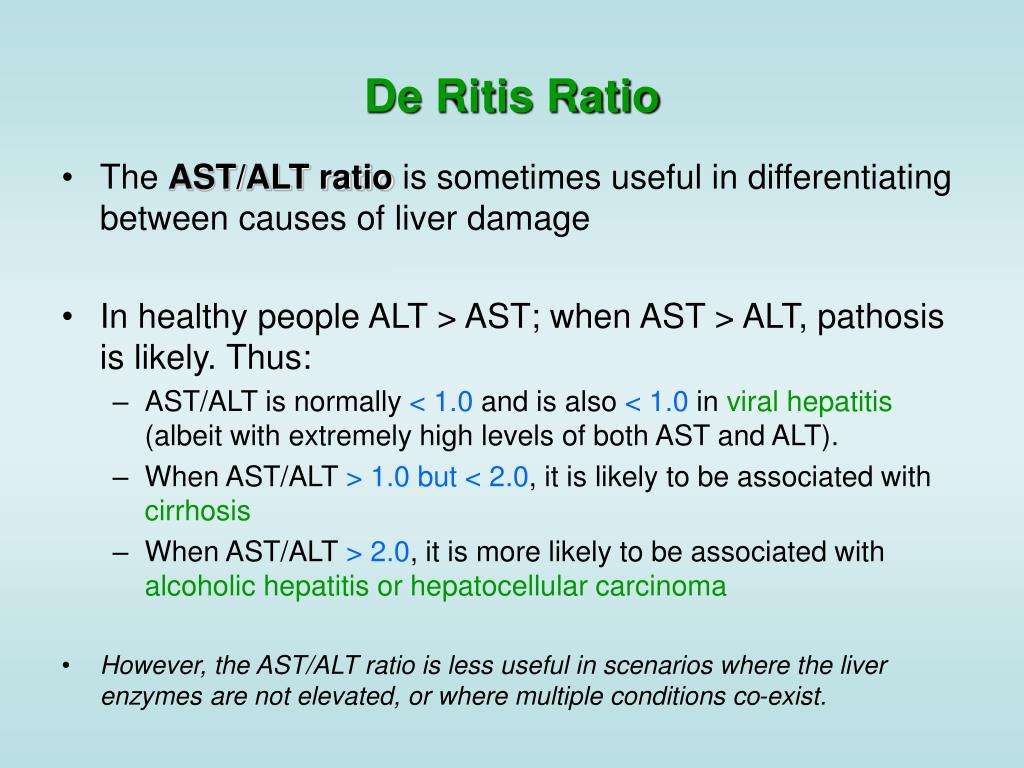What are normal ast alt levels. Understanding Normal AST and ALT Levels: Causes, Symptoms, and Interpretation of Liver Function Tests
What are the normal ranges for AST and ALT liver enzymes. How do doctors interpret elevated liver enzyme levels. What health conditions can cause abnormal AST and ALT results. When should patients be concerned about their liver function test results.
The Significance of AST and ALT in Liver Function Testing
Alanine transaminase (ALT) and aspartate transaminase (AST) are crucial enzymes used as markers for liver health. These hepatic transaminases are often included in standard laboratory panels for asymptomatic outpatients, blood donors, and life insurance applicants. Understanding the normal ranges and interpreting elevated levels of these enzymes is essential for primary care physicians and patients alike.
Why are AST and ALT important indicators of liver health? These enzymes are primarily found in liver cells and are released into the bloodstream when liver cells are damaged. Elevated levels can signal various liver disorders, making them valuable diagnostic tools.
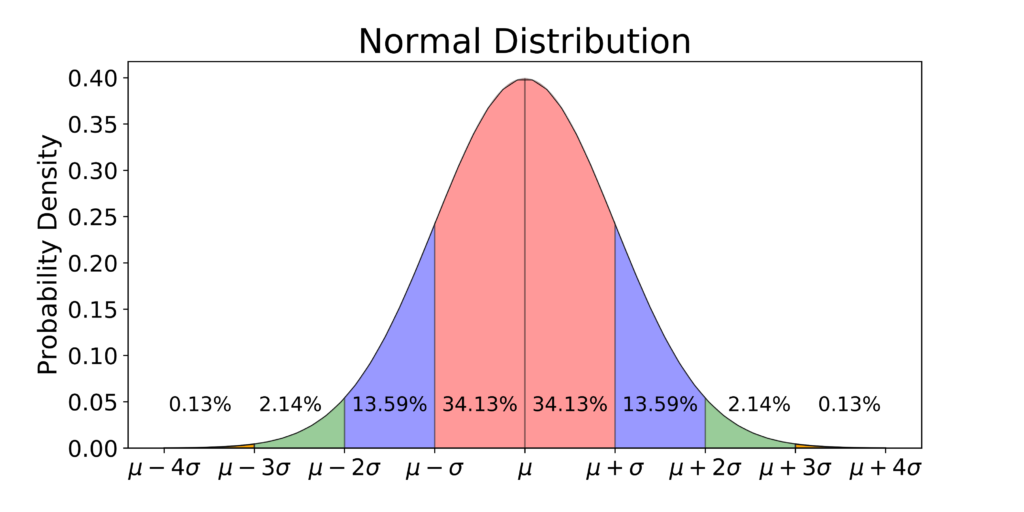
Normal Ranges for AST and ALT
What constitutes normal AST and ALT levels? Generally, the normal range for these enzymes varies slightly between laboratories, but typical values are:
- ALT: 7 to 56 units per liter (U/L)
- AST: 10 to 40 units per liter (U/L)
It’s important to note that the “normal” range is typically defined as the values found in the middle 95% of healthy individuals. This means that up to 2.5% of healthy people may have levels slightly above or below these ranges.
Causes of Elevated AST and ALT Levels
When AST and ALT levels are found to be above the normal range, it can indicate various liver conditions or other health issues. What are the common causes of elevated liver enzymes?
- Viral hepatitis (A, B, C)
- Alcohol use disorder
- Non-alcoholic fatty liver disease (NAFLD)
- Medication-induced liver injury
- Cirrhosis
- Autoimmune hepatitis
- Hemochromatosis
- Wilson’s disease
Are elevated AST and ALT levels always indicative of liver disease? Not necessarily. Temporary elevations can occur due to strenuous exercise, certain medications, or even as a normal variation in some individuals. This is why context and further testing are crucial for accurate diagnosis.
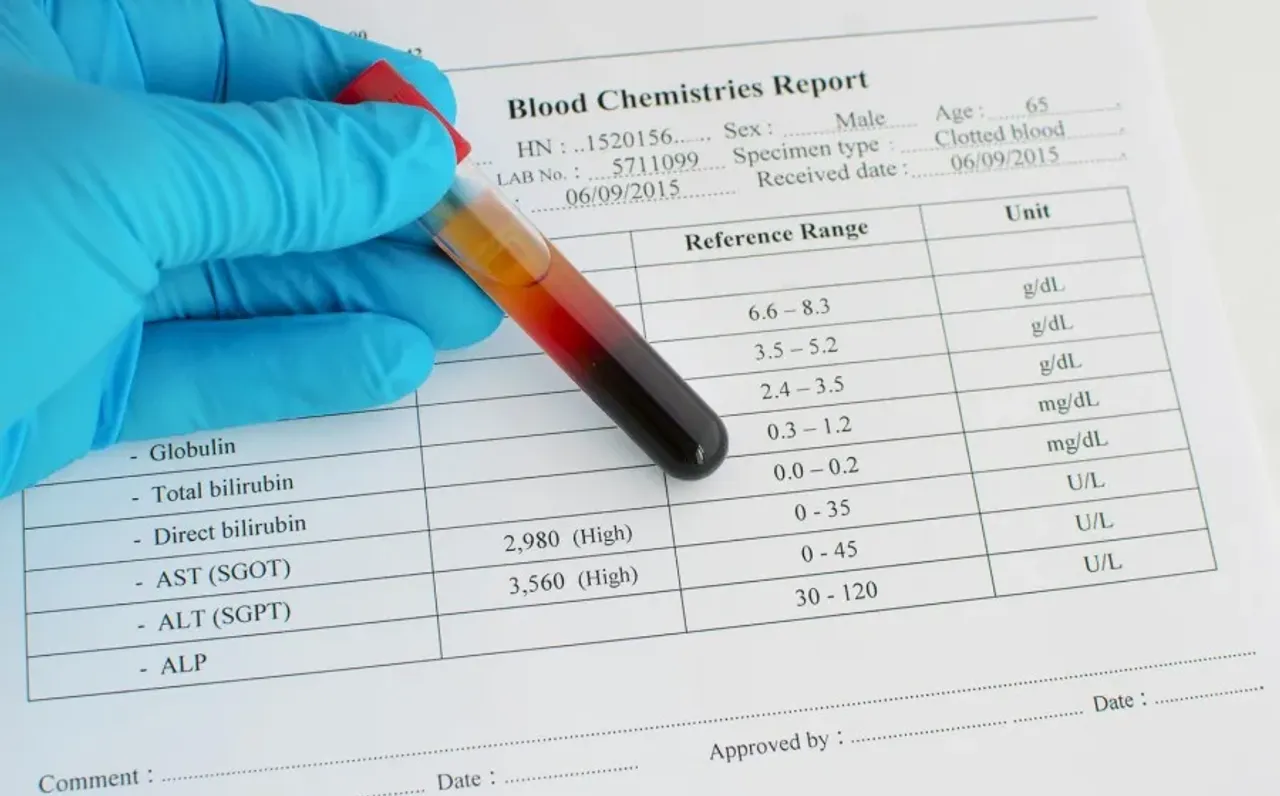
Interpreting AST/ALT Ratios
The ratio of AST to ALT can provide additional diagnostic information. How does the AST/ALT ratio help in diagnosis?
An AST/ALT ratio greater than 2:1 is suggestive of alcoholic liver disease, while a ratio less than 1:1 is more common in viral hepatitis. However, it’s important to note that this ratio is not definitive and should be considered alongside other clinical and laboratory findings.
Limitations of AST/ALT Ratio
While the AST/ALT ratio can be helpful, it’s not a foolproof diagnostic tool. What are the limitations of using this ratio?
- It can be affected by the stage of liver disease
- Some conditions, like cirrhosis, can alter the ratio regardless of the underlying cause
- The ratio may not be reliable in cases of acute liver injury
Evaluation of Mildly Elevated Liver Enzymes
When faced with mildly elevated AST and ALT levels in an asymptomatic patient, how should healthcare providers proceed? The American Gastroenterological Association (AGA) recommends an algorithmic approach:

- Conduct a thorough history and physical examination
- Review medication use, including over-the-counter drugs and supplements
- Assess alcohol consumption
- Consider family history of liver disease
- Evaluate for common health conditions that can affect liver function (e.g., diabetes, heart disease, thyroid disorders)
If the initial evaluation doesn’t reveal a clear cause, what additional tests might be ordered?
- Prothrombin time
- Albumin levels
- Complete blood count with platelets
- Hepatitis A, B, and C serologies
- Iron studies
Management Strategies for Elevated Liver Enzymes
Once the cause of elevated AST and ALT levels is identified, what management strategies can be employed? The approach depends on the underlying etiology but may include:
- Cessation of alcohol use
- Adjustment or discontinuation of hepatotoxic medications
- Improved control of diabetes or other metabolic conditions
- Weight loss and lifestyle modifications for non-alcoholic fatty liver disease
- Specific treatments for viral hepatitis or autoimmune liver diseases
How long should patients be monitored before considering further action? The AGA suggests a period of observation and lifestyle modification for 3-6 months in cases of mild, unexplained elevations. If abnormalities persist, further testing may be warranted.

Advanced Diagnostic Techniques for Persistent Elevations
When initial evaluations and lifestyle modifications fail to normalize AST and ALT levels, what advanced diagnostic techniques might be employed?
- Liver ultrasonography: This non-invasive imaging technique can detect fatty liver disease, cirrhosis, and other structural abnormalities.
- Fibroscan: A specialized ultrasound that assesses liver stiffness, indicating the degree of fibrosis or cirrhosis.
- Magnetic Resonance Elastography (MRE): A more advanced imaging technique that can accurately stage liver fibrosis.
- Liver biopsy: While invasive, this procedure provides definitive information about liver tissue health and can diagnose conditions that blood tests and imaging may miss.
When is a liver biopsy necessary? Liver biopsies are typically reserved for cases where non-invasive tests are inconclusive, or when precise staging of liver disease is crucial for treatment decisions.
Implications of AST and ALT Levels in Specific Populations
Do AST and ALT levels have different implications in various demographic groups? Indeed, interpretation can vary based on age, gender, and other factors:

Pediatric Populations
In children, what constitutes normal AST and ALT levels? Pediatric reference ranges can differ from adult ranges and may vary with age. Generally, upper limits for children are:
- ALT: 25-45 U/L (depending on age and gender)
- AST: 30-50 U/L (depending on age and gender)
Elevated levels in children may indicate different conditions compared to adults, such as genetic metabolic disorders or pediatric forms of fatty liver disease.
Elderly Populations
How do AST and ALT levels change with age? Some studies suggest that ALT levels may decrease slightly with age, while AST levels remain relatively stable. This can affect the interpretation of results in older adults.
Pregnancy
What changes in liver enzymes are normal during pregnancy? Mild elevations in ALT and AST can occur in late pregnancy and usually resolve postpartum. However, significant elevations may indicate pregnancy-related liver disorders such as HELLP syndrome or acute fatty liver of pregnancy.
The Role of AST and ALT in Monitoring Chronic Liver Diseases
For patients with known liver conditions, how are AST and ALT levels used in ongoing management? These enzymes play a crucial role in monitoring disease progression and treatment efficacy:

Chronic Viral Hepatitis
In cases of chronic hepatitis B or C, how do AST and ALT levels guide treatment? Persistently elevated levels may indicate ongoing liver damage and the need for antiviral therapy. Normalization of these enzymes is often a treatment goal, though it doesn’t always correlate with viral clearance.
Non-Alcoholic Fatty Liver Disease (NAFLD)
What do AST and ALT levels reveal about NAFLD progression? While these enzymes can be elevated in NAFLD, their levels don’t always correlate with disease severity. Other markers, such as the NAFLD Fibrosis Score, which incorporates age, BMI, platelet count, albumin, and AST/ALT ratio, may provide more comprehensive risk assessment.
Alcoholic Liver Disease
How do AST and ALT patterns differ in alcoholic liver disease? Typically, AST elevations are more pronounced than ALT, often resulting in an AST/ALT ratio greater than 2. This pattern, combined with other clinical features, can help distinguish alcoholic from non-alcoholic liver disease.
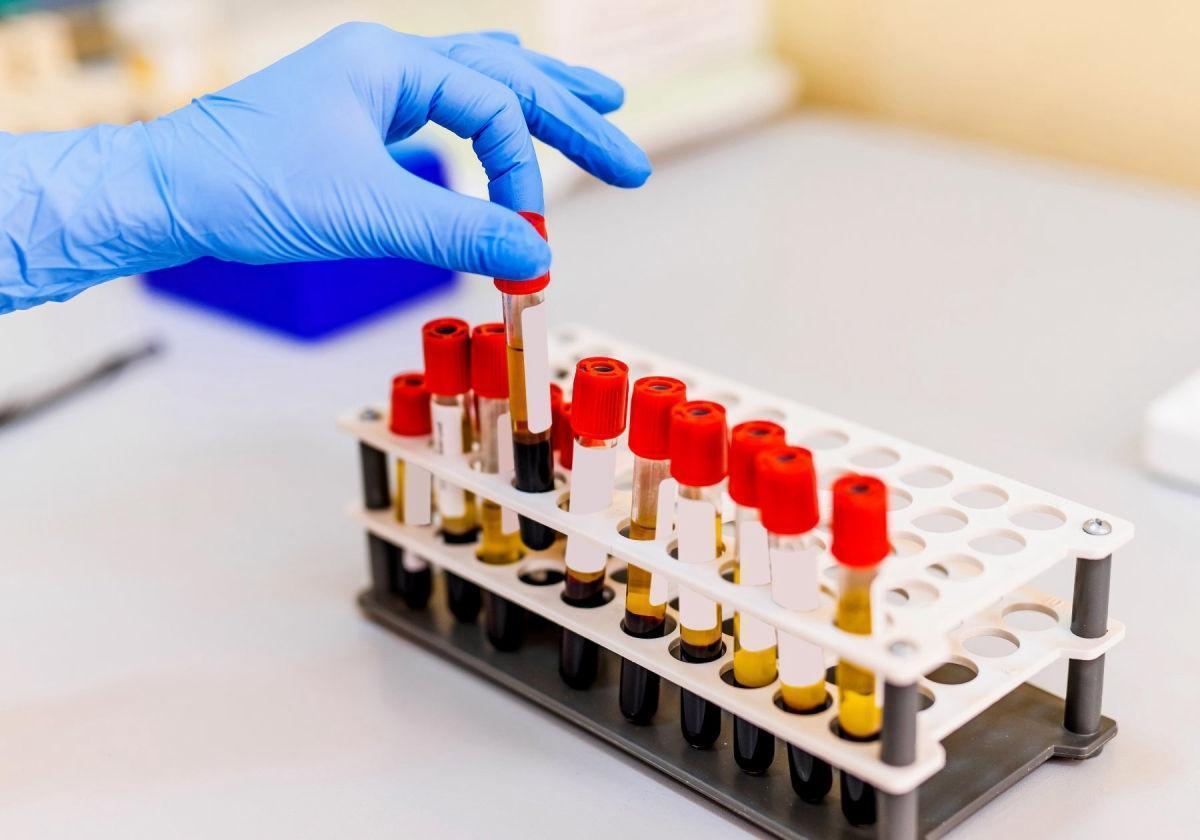
Can AST and ALT levels be used to monitor alcohol abstinence? While normalization of these enzymes often occurs with abstinence, they are not reliable markers of continued sobriety, as other factors can influence their levels.
Emerging Research and Future Directions in Liver Enzyme Testing
What new developments are on the horizon for liver function testing? Several areas of research are expanding our understanding and utilization of liver enzymes:
Novel Biomarkers
Are there new biomarkers that could complement or replace AST and ALT? Researchers are investigating several promising candidates:
- Cytokeratin-18 fragments: May indicate the degree of liver cell death
- microRNAs: Specific patterns could differentiate various liver diseases
- Mac-2 binding protein glycosylation isomer (M2BPGi): Shows promise in assessing liver fibrosis
Genetic Factors Influencing Liver Enzyme Levels
How do genetic variations affect AST and ALT levels? Recent genome-wide association studies have identified several genetic variants that influence baseline liver enzyme levels. This research could lead to more personalized interpretation of liver function tests.

Artificial Intelligence in Liver Disease Diagnosis
Can AI improve the interpretation of liver function tests? Machine learning algorithms are being developed to integrate multiple data points, including AST and ALT levels, patient demographics, and other biomarkers, to improve diagnostic accuracy and predict disease progression.
What potential benefits could AI bring to liver disease management? AI-assisted diagnostics could help:
- Identify subtle patterns in liver enzyme fluctuations that human observers might miss
- Predict which patients are most likely to progress to advanced liver disease
- Optimize treatment strategies based on individual patient profiles
Practical Considerations for Patients and Healthcare Providers
What should patients know about AST and ALT testing? Understanding these key points can help patients engage more effectively in their healthcare:
- Elevated levels don’t always indicate serious liver disease
- Repeat testing is often necessary to confirm persistent elevations
- Lifestyle factors like diet, exercise, and alcohol consumption can affect results
- Full disclosure of medication and supplement use is crucial for accurate interpretation
How can healthcare providers improve their approach to liver enzyme testing? Consider these strategies:

- Develop a standardized protocol for evaluating elevated AST and ALT levels
- Educate patients on the meaning of their test results and next steps
- Stay updated on the latest guidelines for liver disease management
- Consider referral to a hepatologist for complex cases or persistent unexplained elevations
By understanding the nuances of AST and ALT testing and interpretation, both patients and healthcare providers can work together more effectively to maintain liver health and address potential liver diseases early.
Mildly Elevated Liver Transaminase Levels in the Asymptomatic Patient
PAUL T. GIBONEY, M.D.
Mild elevations in liver chemistry tests such as alanine transaminase and aspartate transaminase can reveal serious underlying conditions or have transient and benign etiologies. Potential causes of liver transaminase elevations include viral hepatitis, alcohol use, medication use, steatosis or steatohepatitis, and cirrhosis. The history should be thorough, with special attention given to the use of medications, vitamins, herbs, drugs, and alcohol; family history; and any history of blood-product transfusions. Other common health conditions, such as diabetes, heart disease, and thyroid disease, can cause or augment liver transaminase elevations. The recent American Gastroenterological Association guideline regarding the evaluation and management of abnormal liver chemistry tests proposes a practical, algorithmic approach when the history and physical examination do not reveal the cause. In addition to liver chemistries, an initial serologic evaluation includes a prothrombin time; albumin; complete blood count with platelets; hepatitis A, B, and C serologies; and iron studies. Depending on the etiology, management strategies may include cessation of alcohol use, attention to medications, control of diabetes, and modification of lifestyle factors such as obesity. If elevations persist after an appropriate period of observation, further testing may include ultra-sonography and other serum studies. In some cases, biopsy may be indicated.
The recent American Gastroenterological Association guideline regarding the evaluation and management of abnormal liver chemistry tests proposes a practical, algorithmic approach when the history and physical examination do not reveal the cause. In addition to liver chemistries, an initial serologic evaluation includes a prothrombin time; albumin; complete blood count with platelets; hepatitis A, B, and C serologies; and iron studies. Depending on the etiology, management strategies may include cessation of alcohol use, attention to medications, control of diabetes, and modification of lifestyle factors such as obesity. If elevations persist after an appropriate period of observation, further testing may include ultra-sonography and other serum studies. In some cases, biopsy may be indicated.
Hepatic transaminase tests such as alanine transaminase (ALT) and aspartate transaminase (AST) often are part of standard laboratory panels in asymptomatic outpatients, similar to screening tests for blood donors and for life insurance applicants.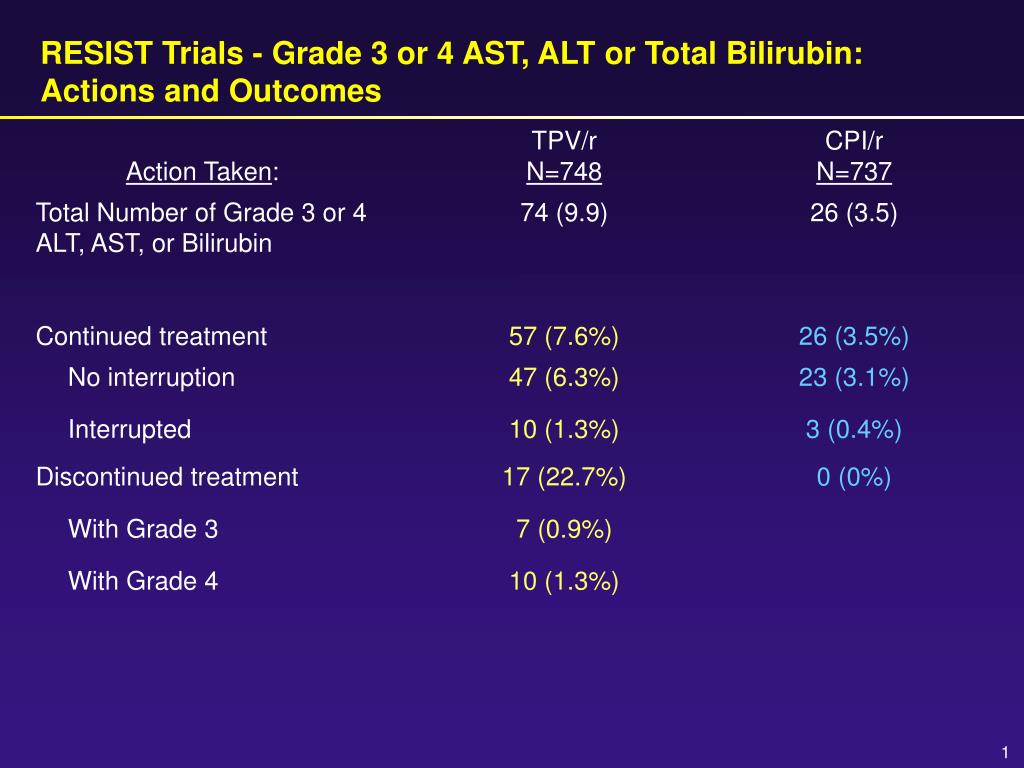 The evaluation of an abnormal ALT or AST level in an asymptomatic patient therefore is a common challenge encountered by primary care physicians.
The evaluation of an abnormal ALT or AST level in an asymptomatic patient therefore is a common challenge encountered by primary care physicians.
According to the American Gastroenterological Association (AGA), 1 to 4 percent of the asymptomatic population may have elevated serum liver chemistries.1 This is consistent with the usual definition of an elevated transaminase level of the top 2.5 percent of the population range. Although one study2 of 19,877 asymptomatic young Air Force trainees found that only 0.5 percent had elevated ALT levels, physicians who have more patients with obesity, diabetes, and hyperlipidemia will have to address this issue more often.
Given the frequency of this problem, physicians should develop an informed approach to the investigation of transaminase elevations. An audit of primary care practices found that these abnormalities are not always investigated appropriately and that opportunities to intervene in treatable cases sometimes are missed. 3 No controlled clinical trials have compared approaches to the management of abnormal transaminase levels. However, the AGA recently published a technical review1 and a position statement4 on the evaluation of liver chemistry tests. This article reviews the interpretation of ALT and AST levels and summarizes the AGA recommendations on addressing reported elevations.
3 No controlled clinical trials have compared approaches to the management of abnormal transaminase levels. However, the AGA recently published a technical review1 and a position statement4 on the evaluation of liver chemistry tests. This article reviews the interpretation of ALT and AST levels and summarizes the AGA recommendations on addressing reported elevations.
| Key clinical recommendation | Label | References |
|---|---|---|
| An algorithmic approach to evaluating mildly abnormal liver functions is recommended. | C | 1 |
| In the asymptomatic patient with negative serum testing and mild transaminase elevations, a period of lifestyle modification can be tried. | C | 1 |
If abnormalities persist at the six-month follow-up visit, an ultrasonography of the liver is the recommended imaging modality. | C | 1 |
| ALT and AST are not useful screening tests in an otherwise healthy population. | C | 1,10 |
| The AST/ALT ratio is only somewhat helpful in diagnosis. | C | 5,7 |
Markers of Hepatic Injury and Necrosis
ALT and AST are two of the most reliable markers of hepatocellular injury or necrosis. Their levels can be elevated in a variety of hepatic disorders. Of the two, ALT is thought to be more specific for hepatic injury because it is present mainly in the cytosol of the liver and in low concentrations elsewhere. AST has cytosolic and mitochondrial forms and is present in tissues of the liver, heart, skeletal muscle, kidneys, brain, pancreas, and lungs, and in white and red blood cells. AST is less commonly referred to as serum glutamic oxaloacetic transaminase and ALT as serum glutamic pyruvic transaminase.
Although levels of ALT and AST can be extremely elevated (exceeding 2,000 U per L in cases of hepatocyte injury and necrosis related to drugs, toxins, ischemia, and hepatitis), elevations less than five times the upper limit of normal (i.e., about 250 U per L and below) are much more common in primary care medicine. The range of possible etiologies at this level of transaminase elevation is broader (Table 15,6) and the tests less specific. It also is important to recall that patients with normal ALT and AST levels can have significant liver disease in the setting of chronic hepatocyte injury (e.g., cirrhosis, hepatitis C).
The rightsholder did not grant rights to reproduce this item in electronic media. For the missing item, see the original print version of this publication.
The ratio of AST to ALT has some clinical utility, but has important limitations. In many forms of acute and chronic liver injury or steatosis (fatty infiltration of the liver), the ratio is less than or equal to 1. This is particularly true in patients with hepatitis C. However, an AST/ALT ratio greater than 2 characteristically is present in alcoholic hepatitis. A recent study7 of 140 patients with nonalcoholic steatohepatitis (NASH; confirmed by liver biopsy) or alcoholic liver disease found a mean AST/ALT ratio of 0.9 in patients with NASH and 2.6 in patients with alcoholic liver disease. Within the population studied, 87 percent of patients with an AST/ALT ratio of 1.3 or less had NASH (87 percent sensitivity, 84 percent specificity). The severity of NASH as measured by the degree of fibrosis increased, as did the AST/ALT ratio. A mean ratio of 1.4 was found in patients with cirrhosis related to NASH. Wilson’s disease, a rare problem, can cause the AST/ALT ratio to exceed 4.5 While these ratios are suggestive of certain conditions, there is too much overlap between groups to rely on them exclusively when making a diagnosis.
This is particularly true in patients with hepatitis C. However, an AST/ALT ratio greater than 2 characteristically is present in alcoholic hepatitis. A recent study7 of 140 patients with nonalcoholic steatohepatitis (NASH; confirmed by liver biopsy) or alcoholic liver disease found a mean AST/ALT ratio of 0.9 in patients with NASH and 2.6 in patients with alcoholic liver disease. Within the population studied, 87 percent of patients with an AST/ALT ratio of 1.3 or less had NASH (87 percent sensitivity, 84 percent specificity). The severity of NASH as measured by the degree of fibrosis increased, as did the AST/ALT ratio. A mean ratio of 1.4 was found in patients with cirrhosis related to NASH. Wilson’s disease, a rare problem, can cause the AST/ALT ratio to exceed 4.5 While these ratios are suggestive of certain conditions, there is too much overlap between groups to rely on them exclusively when making a diagnosis.
Lactate dehydrogenase (LDH) is a less specific marker of hepatocellular necrosis and usually does not add diagnostic information to that obtained with ALT and AST testing. An exception to this is the transient but massive rise of LDH in cases of ischemic hepatitis and its sustained elevation that, along with elevated alkaline phosphatase levels, suggests malignant infiltration of the liver.5
An exception to this is the transient but massive rise of LDH in cases of ischemic hepatitis and its sustained elevation that, along with elevated alkaline phosphatase levels, suggests malignant infiltration of the liver.5
Elevations of ALT and AST are not exclusive to liver pathology. Hyperthyroidism has been found in several studies to increase serum levels of liver enzymes including ALT and AST.8 Genetic influences on the level of ALT also are possible. A study9 of Danish twins showed that genetic factors accounted for 33 to 66 percent of the variation in ALT, gamma glutamyl transpeptidase, LDH, and bilirubin in patients 73 to 94 years of age. The AGA technical review states that serum ALT has diurnal variation, may vary day to day, and may be affected by exercise. It also notes that serum AST may be 15 percent higher in black men than white men.1
Another cause of elevated liver transaminase levels is muscle injury. Strenuous exercise or myopathy can cause elevations (especially of AST) without causing any other symptoms. A creatine kinase or other muscle marker can be obtained to confirm or exclude such a process.
A creatine kinase or other muscle marker can be obtained to confirm or exclude such a process.
Annual screening of healthy, asymptomatic patients for liver disease using ALT and AST levels is not useful. A Japanese study10 assessed the accuracy of ALT and AST for detecting hepatitis C, excess alcohol use, and fatty liver disease in male bank employees and found the positive predictive value of the test to be low. Only 3.9 percent of the men with an abnormal ALT level had hepatitis C; 8 percent were excessive users of alcohol; and 35.7 percent had fatty liver.
Management
A thorough medical history and physical examination are the cornerstone of the evaluation of patients with mildly elevated liver transaminase levels.1 The history should attempt to identify risk factors for disease, with special attention directed toward family history, medications, vitamins, herbal supplements, drug use, alcohol use, abnormal liver testing, blood-product transfusions, and symptoms of liver disease.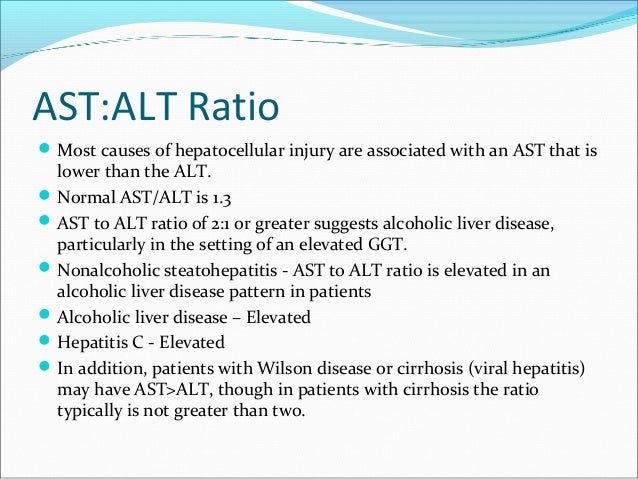 Table 26 lists selected medications and herbal supplements that may cause elevated transaminase levels. Physicians should ask patients directly about their use of illicit drugs, herbal supplements, and other alternative “supplements” because these sometimes are omitted from the patient’s initial response to questions.
Table 26 lists selected medications and herbal supplements that may cause elevated transaminase levels. Physicians should ask patients directly about their use of illicit drugs, herbal supplements, and other alternative “supplements” because these sometimes are omitted from the patient’s initial response to questions.
| Medications | Herbal supplements/vitamins |
|---|---|
| Acetaminophen | Chaparral leaf |
| Amiodarone (Cordarone) | Ephedra |
| Amoxicillin-clavulanic acid | Gentian |
| Carbamazepine (Tegretol) | Germander |
| Fluconazole (Diflucan) | Jin bu huan |
| Glyburide (Micronase) | Kava |
| Heparin | Scutellaria (skullcap) |
| Isoniazid (INH) | Senna |
| Ketoconazole (Nizoral) | Shark cartilage |
| Labetalol (Normodyne) | Vitamin A |
| Nitrofurantoin (Furadantin) | |
| Nonsteroidal anti-inflammatory drugs | |
| Phenytoin (Dilantin) | |
| Protease inhibitors | |
| Sulfonamides | |
| Trazodone (Desyrel) |
The presence of other significant health conditions that can cause or augment liver transaminase elevations also should be noted; examples are diabetes, heart disease (including congestive heart failure), thyroid disease, muscle disease, and cancer. Physical findings and sequelae of liver dysfunction are given in Table 3.
Physical findings and sequelae of liver dysfunction are given in Table 3.
| Clinical clue | Suggested diagnosis |
|---|---|
| Longstanding alcohol abuse | Cirrhosis |
| Intravenous drug use, history of blood product transfusions, nonsterile needle exposure, AST/ALT ratio < 1.0 | Hepatitis B or C |
| Obesity, diabetes, hyperlipidemia, AST/ALT ratio < 1.0 | Steatosis/steatohepatitis |
| AST/ALT ratio > 2.0 | Alcoholic liver disease, Wilson’s disease |
| Increased iron levels | Hemochromatosis |
| Polypharmacy, illicit drug use, or certain herbal supplement use | Substance/medication-induced |
| Frequent, strenuous exercise | Exercise-induced |
| Intestinal bloating; oily, bulky stools | Celiac sprue |
| Hypergammaglobulinemia | Autoimmune hepatitis |
| Reduced ceruloplasmin levels, Kayser-Fleischer ring | Wilson’s disease |
| Depressed thyroid-stimulating hormone levels | Hyperthyroidism |
Once the history and physical examination are completed, additional testing can help discern the etiology of the transaminase elevation (Figure 1).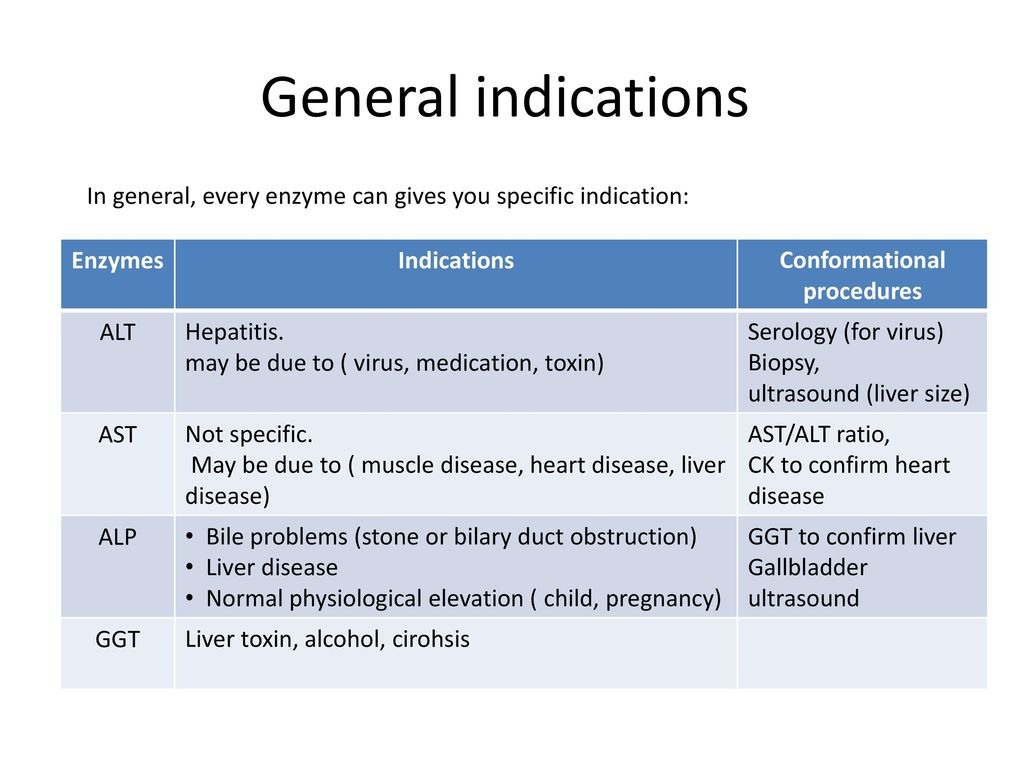 4
4
INITIAL LABORATORY EVALUATION
Additional laboratory tests should be obtained when the history and physical examination show no obvious etiology for ALT and AST elevations. Ferritin, total iron-binding capacity, and serum iron can be used to look for hemochromatosis, while hepatitis A, B, and C serologies are used to rule out acute or chronic hepatitis.
Despite the emergence of widespread vaccination, hepatitis B remains a common cause of chronic liver disease in adults. Testing for hepatitis C is essential because its incidence has increased in the past decade, and new treatment strategies have been developed that can address this frequently missed problem.11
A prothrombin time (PT) and serum albumin should be ordered to identify patients with abnormalities of protein synthesis and liver function. Evaluation should be accelerated for patients with impaired hepatic synthetic function. A complete blood count with platelets also should be ordered. In addition to ruling out infection, neutropenia or thrombocytopenia can, along with an elevated PT, suggest advanced liver disease. An elevated mean red cell volume suggests heavy alcohol intake. Alkaline phosphatase and bilirubin are markers for hepatic cholestasis and should be ordered as part of the initial laboratory evaluation. While sometimes useful, they often are normal in the presence of hepatic injury.
In addition to ruling out infection, neutropenia or thrombocytopenia can, along with an elevated PT, suggest advanced liver disease. An elevated mean red cell volume suggests heavy alcohol intake. Alkaline phosphatase and bilirubin are markers for hepatic cholestasis and should be ordered as part of the initial laboratory evaluation. While sometimes useful, they often are normal in the presence of hepatic injury.
LIFESTYLE MODIFICATION
If the patient is asymptomatic and the initial serum testing is negative, a period of lifestyle modification can be attempted. Effective lifestyle modification includes complete abstinence from alcohol, control of diabetes and hyperlipidemia, weight loss in overweight patients, and stopping or changing potentially hepatotoxic medications and supplements. Such lifestyle changes directly impact several of the causes of mild transaminase elevation (Table 1).5,6 These seemingly small modifications may be all that is needed to correct the abnormalities.
FOLLOW-UP AND IMAGING STUDIES
A repeat set of liver chemistries should be obtained after six months. If the patient’s presentation changes or the physician has concern for an evolving process, shorter intervals can be used. If abnormalities persist at the six-month follow-up visit, ultra-sonography of the liver is recommended. Computed tomography of the abdomen also is used in this setting, although clinical trials have not demonstrated an advantage of this more expensive modality.
Steatohepatitis (or nonalcoholic fatty liver disease) often is discovered by imaging. This condition may be the most frequent cause of mild liver chemistry elevations and is especially common in patients who are obese, and those who have diabetes or hyperlipidemia. One study12 of patients referred to a hospital-based gastroenterology practice found that in 83 percent of patients with elevated transaminase levels whose serum evaluation was otherwise negative, liver biopsy revealed steatosis or steatohepatitis. In 10 percent of the patients, however, liver biopsy was normal—a reminder that, at times, mildly elevated transaminase levels do not represent any underlying pathology. Excellent reviews of the management of nonalcoholic fatty liver disease have been published.13,14
In 10 percent of the patients, however, liver biopsy was normal—a reminder that, at times, mildly elevated transaminase levels do not represent any underlying pathology. Excellent reviews of the management of nonalcoholic fatty liver disease have been published.13,14
If the diagnosis is not apparent from the ultrasound examination, further testing is suggested for alpha1-antitrypsin deficiency (alpha1-antitrypsin levels), Wilson’s disease (serum ceruloplasmin), celiac disease (antigliadin and anti-endomysial antibody), and autoimmune hepatitis (antinuclear antibody, anti–smooth-muscle antibody), as well as for nonhepatic causes of transaminase elevation. According to the AGA, the decision to perform a liver biopsy needs to be made on an individual basis, taking into consideration the patient’s age, lifestyle, liver chemistry abnormalities, desire for prognostic information, and associated comorbid conditions.1 Only with chronic mild transaminase elevations would an asymptomatic patient be considered a possible candidate for biopsy.
AST (SGOT): Liver Function Test
Attention A T users. To access the menus on this page please perform the following steps.
1. Please switch auto forms mode to off.
2. Hit enter to expand a main menu option (Health, Benefits, etc).
3. To enter and activate the submenu links, hit the down arrow.
You will now be able to tab or arrow up or down through the submenu options to access/activate the submenu links.
Locator
Contact
Search
Contact Us
FAQs
Ask a Question
Toll Free Numbers
Locator
Hospitals and Clinics
Vet Centers
Regional Benefits Offices
Regional Loan Centers
Cemetery Locations
VA »
Health Care »
Viral Hepatitis and Liver Disease
» Hepatitis C » What’s New » For Patients
»
AST (SGOT): Liver Function Test
Menu
Menu
- Viral Hepatitis and Liver Disease
- More Health Care
Quick Links
AST (SGOT): Liver Function Test
Hepatitis C
AST, or aspartate aminotransferase, is one of the two liver enzymes. It is also known as serum glutamic-oxaloacetic transaminase, or SGOT. AST is a protein made by liver cells. When liver cells are damaged, AST leaks out into the bloodstream and the level of AST in the blood becomes elevated. AST is different from ALT because AST is found in parts of the body other than the liver—including the heart, kidneys, muscles, and brain. When cells in any of those parts of the body are damaged, AST can be elevated.
It is also known as serum glutamic-oxaloacetic transaminase, or SGOT. AST is a protein made by liver cells. When liver cells are damaged, AST leaks out into the bloodstream and the level of AST in the blood becomes elevated. AST is different from ALT because AST is found in parts of the body other than the liver—including the heart, kidneys, muscles, and brain. When cells in any of those parts of the body are damaged, AST can be elevated.
Explanation of test results:
A high AST level often means there is some liver damage, but it is not necessarily caused by hepatitis C. A high AST with a normal ALT may mean that the AST is coming from a different part of the body. It is important to realize that the AST level in most patients with hepatitis C goes up and down. The exact AST level does not tell you how much liver damage there is, or whether the liver is getting better or worse, and small changes should be expected. However, for patients receiving treatment for hepatitis C, it is helpful to see if the AST level goes down.
Other things to know:
- The AST level is not as helpful as the ALT level for checking the liver.
- Many patients with hepatitis C will have a normal AST level.
- Patients can have very severe liver disease or cirrhosis and still have a normal AST level.
< PreviousJust Diagnosed MainNext >
Alanine aminotransferase (ALT, ALAT, ALAT, ALT) in blood, biochemical analysis
- Details
- Views: 15326
Alanine aminotransferase (ALT, ALAT, ALAT, ALT) in blood, animal blood chemistry
GENERAL INFORMATION 90 011
Research material: Blood.
Alanine aminotransferase (ALT, ALAT, ALAT, ALT) is an intracellular enzyme synthesized in many cells. In a relatively higher concentration, ALT is found in liver cells and at a lower concentration in the cells of the kidneys, heart, skeletal muscles, and in erythrocytes.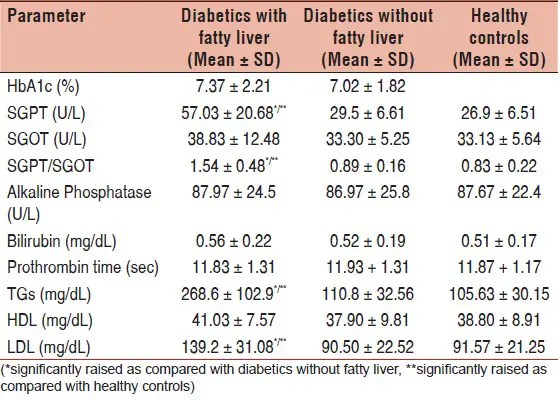 Therefore, the ALT level is a more specific indicator of damage occurring in the liver compared to ACT (aspartate aminotransferase, ASAT, AST) .
Therefore, the ALT level is a more specific indicator of damage occurring in the liver compared to ACT (aspartate aminotransferase, ASAT, AST) .
ALT can be released from cells (by leakage through the cell membrane) when they are sublethally damaged or necrotic, or due to induction (increased synthesis) of hepatic enzymes. Cholestasis or obstruction of the bile ducts can cause an increase in ALT levels due to the toxic effects of bile salts on hepatocytes. An increase in the level of ALT in the blood serum is significant if the indicator exceeds the norm by 2-3 times.
The serum half-life of ALT is approximately 5 days (in dogs). Enzyme levels rise 12 hours after damage to liver cells; while reaching the maximum level is observed within 1-2 days; subsequent recovery to normal takes about 1-3 weeks if further cell damage has been stopped.
In dogs, ALT levels rise after severe muscle injury. This process is also possible in cats; however, there is insufficient data on this topic (perhaps due to the small muscle mass in this animal species). An increase in ALT concentration is also possible due to intravascular hemolysis, especially in cats. ALT, located in the epithelium of the kidneys, can penetrate into the urine, but its level in the blood serum does not increase.
An increase in ALT concentration is also possible due to intravascular hemolysis, especially in cats. ALT, located in the epithelium of the kidneys, can penetrate into the urine, but its level in the blood serum does not increase.
Indications
Suspected liver disease.
Organ systems assessed
• Hepatobiliary system.
• Musculoskeletal system.
SPECIMEN HANDLING
Sample collection
0.5-2.0 ml of venous blood is required.
Processing of received samples
- Blood is collected in a regular tube with a red cap or in a tube with components for separating serum.
- EDTA, sodium or lithium heparinate are suitable anticoagulants.
- Refrigerated serum or plasma must be separated from cells within 2 days.
Storage conditions
If long-term storage is required, serum or plasma should be refrigerated or frozen.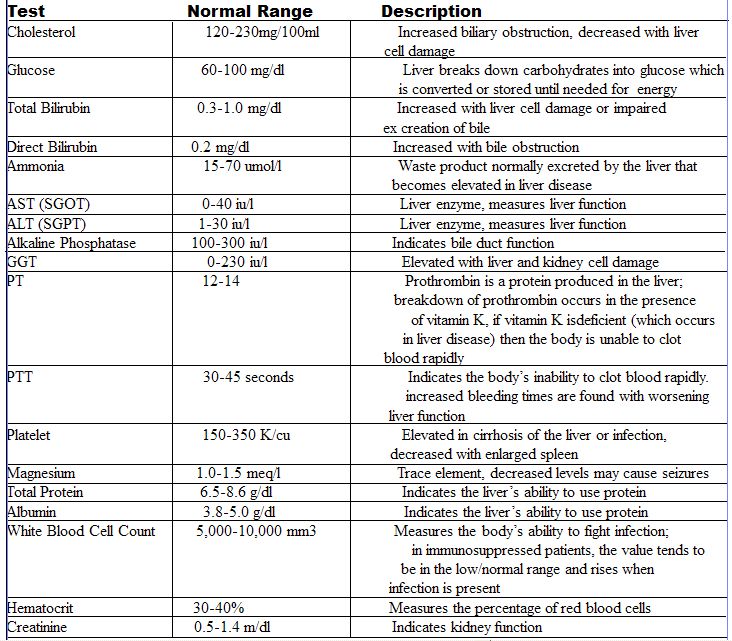
Sample stability
- At room temperature: 1 day.
- Refrigerator (2-8°C): 1 week.
- Frozen (-20°C): more than 1 week.
INTERPRETATION OF TEST RESULTS
Reference range
- Dogs: 18-86 IU/l.
- Cats: 29-145 IU/l.
- Reference intervals may vary depending on laboratory and test method.
Factors affecting test results
Drugs that may affect test results or interpretation
Drugs that may interfere with test methodology
- Metronidazole may underestimate ALT activity as determined using NADH-dependent assays due to the nearly identical maximum absorption wavelength of NADH (340 nm) and metronidazole (322 nm) .
- ALT activity may decrease in the presence of cephalosporins, cyclosporine and isoniazid in the sample, due to impaired activation of vitamin B6 with the formation of pyridoxal-5′-phosphate (P5P).
 This effect can be avoided by adding the cofactor P5P to the sample.
This effect can be avoided by adding the cofactor P5P to the sample.
Drugs that may affect physiological processes in the body
- Corticosteroid drugs may increase ALT activity through possible induction or damage to liver cells (steroid-dependent hepatopathy).
- Phenobarbital may increase ALT activity through induction or damage to liver cells.
- Various hepatotoxic drugs (eg, erythromycin, rifampin, sulfonamides, acetaminophen, caparsolate) may increase ALT activity.
Disorders that may interfere with test results
- Hemolysis may cause a moderate increase in ALT activity.
- Lipemia may cause a false increase in ALT activity.
- Low levels of vitamin B6, an essential cofactor for this enzyme, can reduce ALT activity (in rare cases, it can occur idiopathically; in humans, a decrease in vitamin B6 is noted during hemodialysis).
Errors in sampling and testing that may affect the results of the test
Hemolysis or severe lipemia.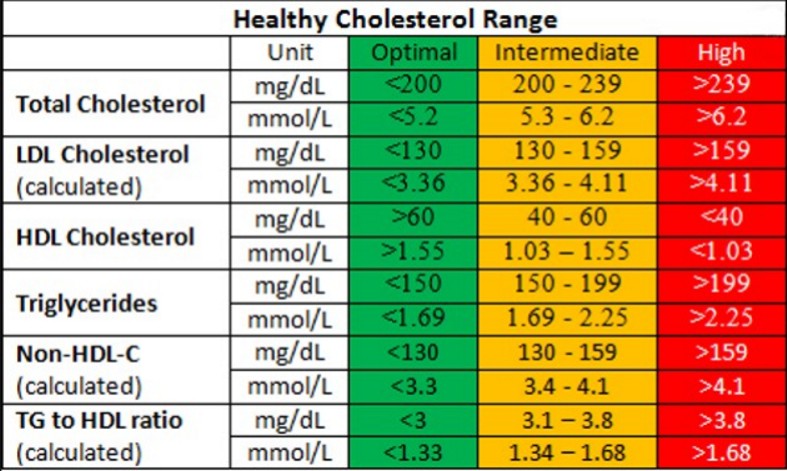
Special factors affecting the conduct and interpretation of the results of this test
- Animal species – No effect.
- Breed – Does not affect.
- Age – No effect.
- Gender – Does not affect.
- Pregnancy No effect.
Shortcomings of the test
The test is relatively specific and sensitive in assessing liver damage; however, the activity of the enzyme may remain within the normal range or only slightly increase in the case of severe chronic damage that has led to a decrease in liver volume.
Causes of pathological changes
High values:
- Damage to hepatocytes or leakage of the enzyme through the cell membrane
- Inflammation (hepatitis)
- Action of toxins or drugs
- Neoplasia of the liver or biliary tract
- Corticosteroid-induced hepatopathy
- Liver lipidosis
- Hypoxia (due to anemia, diseases of the cardiovascular system)
- Pancreatitis
- Trauma
- Parasitic lesion (liver fluke)
- Cirrhosis
- Copper storage disease
- Treatment with drugs (phenobarbital, glucocorticoids)
- Injury or necrosis of muscle tissue (pronounced)
- Excessive muscular load
- Myositis
Low values:
- Liver atrophy (for chronic congenital portosystemic shunts)
- P5P reduction (if this cofactor was not added to the sample)
Clinical use
- ALT is a fairly specific indicator of liver cell damage in dogs and cats.

- With severe muscle damage, in addition to ALT, the activity of AST and creatine kinase also increases; however, ALT elevations are usually below AST levels.
- The increase in ALT activity in liver diseases is proportional to the number of cells that have undergone necrosis or damage. Mild chronic liver damage can cause liver failure, in which there will be no leakage of enzymes from hepatocytes or it will occur to a small extent.
FURTHER INFORMATION
Additional testing
- It is recommended that ACT be assessed simultaneously with ALT activity to confirm hepatocyte damage.
- Evaluation of creatine kinase levels can help confirm or rule out the presence of muscle necrosis as a possible cause of elevated ALT levels.
- Assessment of alkaline phosphatase or GGT will reveal possible cholestatic disorder associated with liver disease.
- Determination of serum bile acids or plasma ammonia to assess liver function.

Synonyms
- ALT, ALAT.
- Serum glutamate pyruvate transminase (SGPT).
Abbreviations
- ALT, alanine aminotransferase.
ACT – aspartate aminotransferase.
Р5Р – pyridoxal-5′-phosphate.
NADH — reduced nicotinamide adenine dinucleotide.
GGT – gamma-glutamyl transferase.
It is possible to make a biochemical analysis and to determine the concentration of Alanine aminotransferase (ALT, ALAT, ALAT, ALT) in the blood in independent laboratory of the veterinary clinic Kotofey, Dnipro.
Information taken from open sources and textbooks from popular publishers.
table of norms and deviations from the norm
Contents
- 1 Norm of ALT and AST in women: what values should be?
- 1.1 ALT and AST norms in women: a table of values and deviations from the norm
- 1.
 2 ALT and AST in a biochemical blood test: what are these indicators and how do they interact?
2 ALT and AST in a biochemical blood test: what are these indicators and how do they interact? - 1.3 How are ALT and AST levels determined?
- 1.4 What factors can influence ALT and AST levels?
- 1.5 What are considered normal values?
- 1.6 Causes of abnormal ALT and AST
- 1.7 What diseases can lead to an increase in ALT and AST?
- 1.8 Diseases associated with a decrease in the level of ALT and AST in women
- 1.9 What is the danger of abnormal ALT and AST?
- 1.10 How to maintain normal ALT and AST levels?
- 1.11 Which drugs can affect ALT and AST levels?
- 1.12 What natural measures can help maintain normal ALT and AST levels?
- 1.13 Related videos:
- 1.14 Q&A:
- 1.14.0.1 How to understand ALT and AST blood test results?
- 1.14.0.2 Why can women have high levels of ALT and AST?
- 1.14.0.3 What should I do if my ALT and AST levels are too high?
- 1.
 14.0.4 Can drugs affect blood levels of ALT and AST?
14.0.4 Can drugs affect blood levels of ALT and AST? - 1.14.0.5 Can ALT and AST levels differ by woman’s age?
- 1.14.0.6 What are the symptoms of high ALT and AST levels?
Find out what normal ALT and AST values are for women and what abnormalities might indicate. Tips for the prevention and treatment of liver pathologies.
Aspartate aminotransferase (AST) and alanine aminotransferase (ALT) are key indicators of liver function. Their level in the blood allows the diagnosis of many diseases. However, it is important to understand which values are normal and which may indicate pathology.
Biochemical analysis of blood shows the concentration of AST and ALT in units per liter of blood (U/l). The norms of indicators depend on gender, age and general condition of the body. Their deviation can be caused by a variety of factors, including alcohol, drugs and infections, as well as malnutrition and vitamin and mineral deficiencies.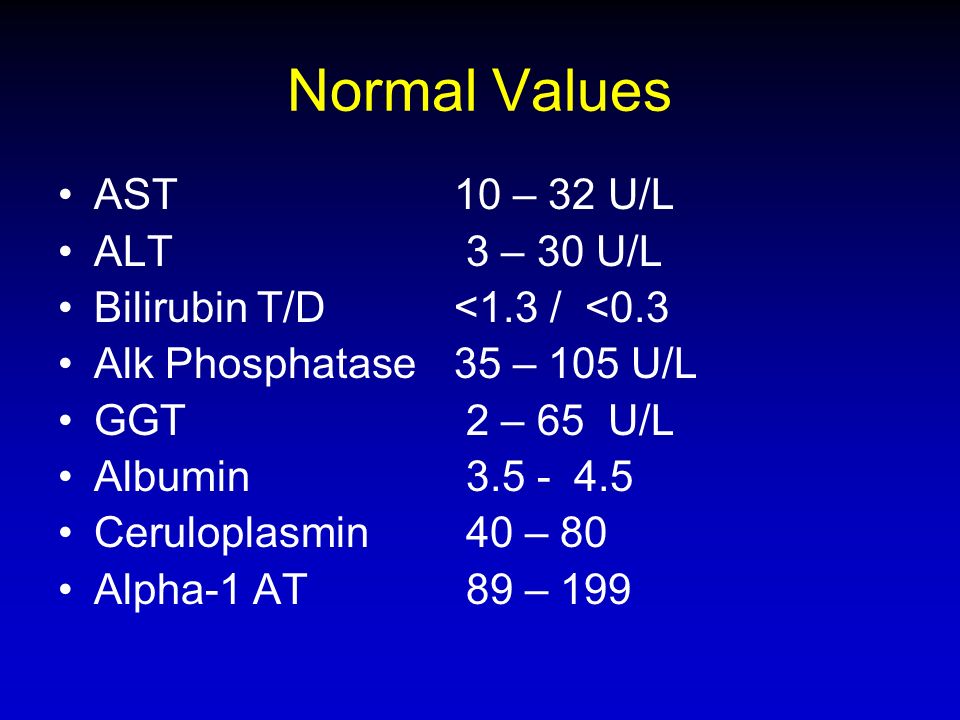
In this article, we will look at what levels of AST and ALT are optimal for women, and why their deviation can be a signal of a possible disease. We will also present a table with the norms of indicators and tips for maintaining liver health.
ALT and AST norms in women: table of values and deviations from the norm
ALT and AST are important indicators of liver function. In women, normal ALT levels range from 7 to 31 units/L, and AST levels range from 7 to 35 units/L. In case of deviations from the norm, there may be a suspicion of the presence of hepatic pathology.
In addition, ALT and AST levels may differ depending on age, gender, physical activity, and other factors. To accurately determine if you have a deviation from the norm, you need to consult a doctor and additional research.
Table of norms of ALT and AST in women Norm Elevated level
| ALT | 7-31 units/l | more than 31 units/l |
| AST | 7-35 units/l | more than 35 units/l |
If you find abnormalities, do not panic and do not self-medicate. See a doctor to assess the situation and find out if your body needs treatment. Timely access to a specialist will help maintain health and avoid serious complications.
See a doctor to assess the situation and find out if your body needs treatment. Timely access to a specialist will help maintain health and avoid serious complications.
ALT and AST in a biochemical blood test: what are these indicators and how do they interact?
Alanine aminotransferase (ALT) and aspartate aminotransferase (AST) are protein enzymes that are found in various organs of our body and are involved in the processes of amino acid metabolism.
ALT is primarily found in the liver and may be elevated in the blood in various liver diseases, including cirrhosis, hepatitis, fatty degeneration, and liver cancer.
AST is present in the heart muscle, liver, spleen, lungs, kidneys and other organs. An elevated level of AST may indicate a complication of heart failure, myocarditis, acute pancreatitis, severe intoxication, and other diseases of organs containing this enzyme.
In a biochemical blood test, both indicators, ALT and AST, differ in the degree of universalization of organ specificity, therefore, the timely determination of their levels in the blood makes it possible to detect diseases of various organs at an early stage, which is important for providing timely and high-quality medical care.
How are ALT and AST levels determined?
The level of ALT and AST in a person’s blood is determined by special blood tests, which may be ordered by the attending physician, depending on the patient’s symptoms and health status. These tests are commonly referred to as a blood chemistry test.
Special conditions must be met before testing. For example, 12 hours before the procedure, you must give up food and alcohol. It is also necessary to inform the doctor about all medications taken and the state of health in general, so that the results of the analysis are as accurate as possible.
Blood levels of ALT and AST can be affected by a variety of factors, including medication, digestive and metabolic processes in the body, and other causes. Therefore, the results of the analysis may be different at different times and require additional examination and specialist advice for proper diagnosis and treatment.
What factors can affect ALT and AST levels?
ALT and AST blood levels can vary depending on various factors, including:
- Liver disease: Elevated ALT and AST levels are often associated with liver disease such as cirrhosis, hepatitis and fatty liver.

- Alcohol and drug poisoning: ALT and AST levels may temporarily increase when using alcohol or drugs.
- Medicines and supplements: Some medicines and supplements can increase blood levels of ALT and AST.
- Viral infections: Viral infections such as hepatitis B and C can lead to elevated levels of ALT and AST.
- Muscle Damage: Elevated levels of ALT and AST can occur when muscles are damaged, such as after intense exercise.
If you have elevated levels of ALT and AST in your blood, you need to see a doctor to determine the cause and further treatment.
What indicators are considered normal?
When it comes to health, it is important for every person to know what indicators are normal for the body. One of these indicators is the level of AST (aspartate aminotransferase) and ALT (alanine aminotransferase) in the blood.
Of course, each person has their own levels of AST and ALT, so the norm for one person may not be suitable for another.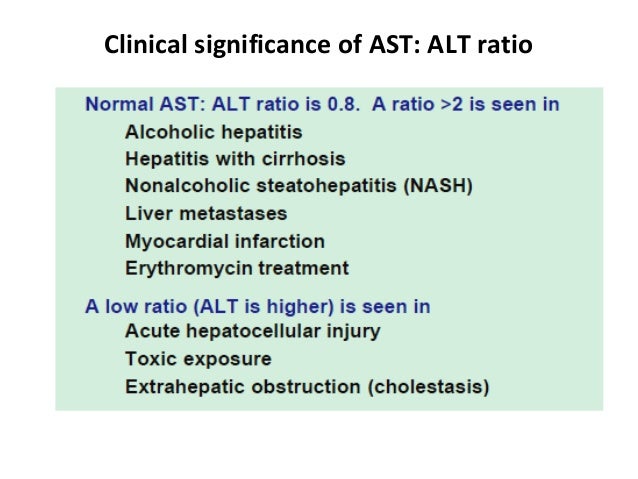 However, there is a general table with the norms of AST and ALT indicators for women, a deviation from which may indicate health problems.
However, there is a general table with the norms of AST and ALT indicators for women, a deviation from which may indicate health problems.
- The normal AST level for women should not exceed 31 U/L.
- The normal ALT level for women should not exceed 34 U/L.
If the level of AST and ALT in a woman’s blood is very abnormal, this may indicate the presence of various diseases – from the common cold to serious liver diseases such as hepatitis or cirrhosis.
Therefore, with the smallest deviations from the norm, it is necessary to consult a doctor so that he decides on further actions and starts an appropriate observation card.
Causes of abnormalities ALT and AST
ALT and AST are enzymes that are removed from liver cells only when they are damaged. Therefore, any deviations from the norm indicate the presence of problems in the work of this body.
Increased ALT and AST levels can be caused by:
- Chronic liver disease such as hepatitis, cirrhosis or fatty degeneration;
- Alcohol or drug intoxication;
- Complications after liver surgery;
- Certain drugs;
- Endocrine disorders;
- Infectious diseases aimed at the destruction of liver cells.

At the same time, low levels of ALT and AST are not dangerous and do not indicate the presence of any disease.
However, in case of any deviations from the norm, it is necessary to consult a doctor who will conduct an additional examination and prescribe the necessary treatment.
What diseases can lead to an increase in ALT and AST?
ALT and AST are enzymes found in liver and muscle cells. If their level in the blood is increased, this may indicate the presence of various diseases.
One of the most common causes of elevated ALT and AST in women is hepatitis . This is an inflammatory disease of the liver that can be caused by various viruses. In addition to elevated ALT and AST, hepatitis often has symptoms such as jaundice, swollen lymph nodes, and extreme fatigue.
Cirrhosis of the liver may be another reason for the increase in ALT and AST. This is a chronic liver disease in which healthy liver cells are replaced by scar tissue.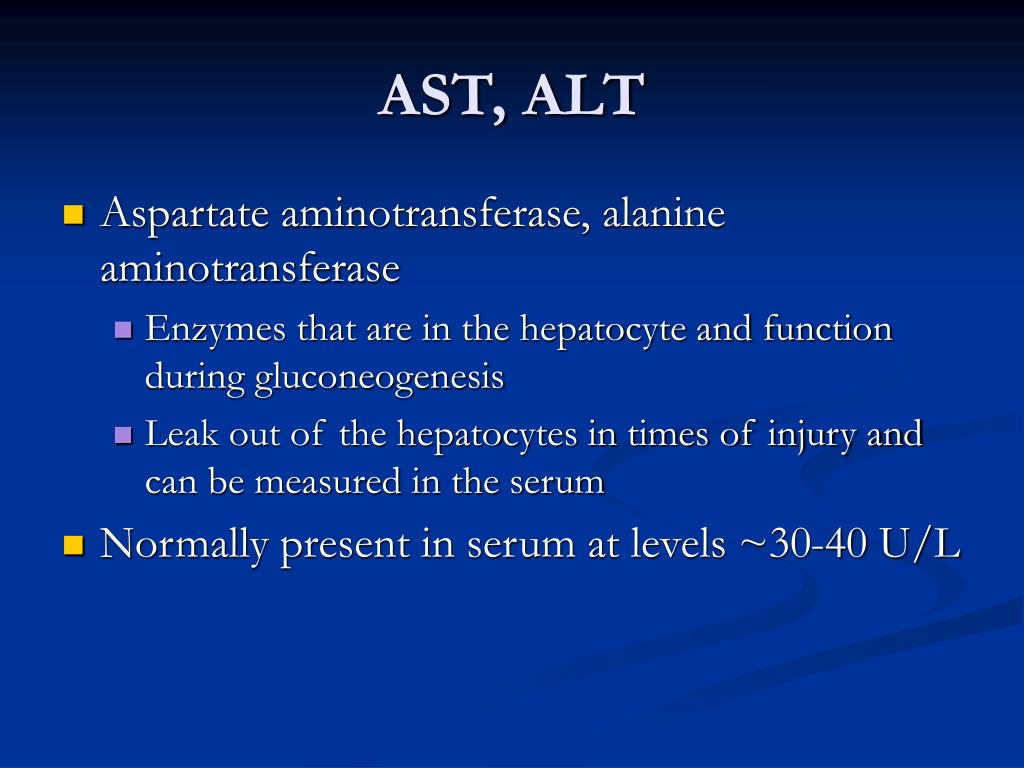 In addition to an increase in ALT and AST, cirrhosis often has symptoms such as jaundice, abdominal swelling, and an enlarged spleen.
In addition to an increase in ALT and AST, cirrhosis often has symptoms such as jaundice, abdominal swelling, and an enlarged spleen.
Also elevated levels of ALT and AST may indicate fatty liver . This is a condition in which fat accumulates in the cells of the liver, leading to liver inflammation and damage. Fatty liver can be caused by dietary disorders, alcoholic and non-alcoholic fatty liver disease.
Other causes of elevated ALT and AST include heart disease , malignant tumors and the use of certain medications.
Diseases associated with low levels of ALT and AST in women
Alanine aminotransferase (ALT) and Aspartate aminotransferase (AST) are enzymes that are found inside the cells of the liver, heart and muscle. If the levels of these enzymes in the blood are elevated, it may indicate a possible health problem.
However, ALT and AST may also decrease, which may indicate the presence of other diseases. For example:
For example:
- Liver disease: Chronic liver disease, such as cirrhosis, can cause low blood levels of these enzymes. In addition, certain medications, such as thyroid hormones, antidepressants, and barbiturates, can also lower ALT and AST levels.
- Blood disorders: Myelodysplastic syndrome (MDS) is a group of bone marrow disorders that can lead to low levels of ALT and AST in the blood.
- Muscle disorders: Myopathies are disorders of the muscle tissue that can lead to low levels of ALT and AST in the blood.
If your ALT and AST levels have dropped significantly while being treated for other conditions, you should see your doctor to adjust the dosage of your medications or select alternatives.
Why is ALT and AST abnormal?
ALT and AST are enzymes produced by liver cells. When the liver is damaged, these enzymes are released into the blood. Therefore, the analysis of ALT and AST allows you to determine the presence of liver damage. If the levels of ALT and AST are higher than normal, this may indicate the presence of diseases such as hepatitis, cirrhosis, or cancer.
If the levels of ALT and AST are higher than normal, this may indicate the presence of diseases such as hepatitis, cirrhosis, or cancer.
Abnormal ALT and AST is a serious symptom that requires immediate attention.
If you notice a significant deviation from the norm, be sure to seek medical advice. You should not immediately begin treatment on your own or ignore this symptom.
- High levels of ALT and AST can lead to a deterioration in the general condition of the body;
- deviation from the norm can turn into severe liver disease, up to cirrhosis;
- abnormal ALT and AST may also be one of the indicators of the metabolic syndrome.
Therefore, if you encounter a deviation from the norm of ALT and AST, you need to undergo an additional examination and clarify the cause of this phenomenon in order to start treatment in a timely manner and prevent the development of serious diseases.
How to maintain normal ALT and AST levels?
A woman’s normal ALT and AST levels are an important indicator of liver and heart health.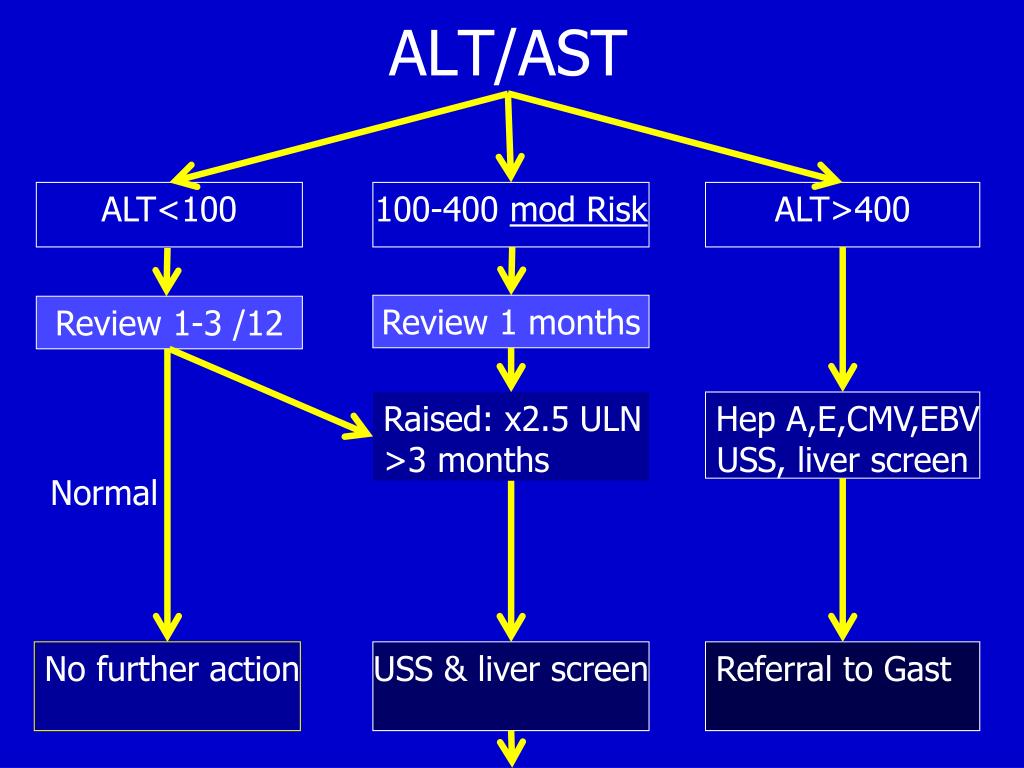 However, a number of factors can increase the levels of these enzymes, such as alcohol and fatty foods, exercise, and certain medications.
However, a number of factors can increase the levels of these enzymes, such as alcohol and fatty foods, exercise, and certain medications.
To maintain normal ALT and AST levels, the following is recommended:
- Proper nutrition – increase the intake of vegetables, fruits, grains and protein foods, and reduce the intake of fatty and fried foods.
- Smoking cessation and moderate alcohol consumption.
- Regular exercise such as running, swimming, yoga or just walking outdoors.
- Compliance with the correct dosage and frequency of taking medications as prescribed by a doctor.
In addition, women with elevated ALT and AST levels should have regular check-ups with their doctor and monitor their health. If liver or heart disease is detected, follow the doctor’s instructions and receive the necessary treatment to restore normal levels of ALT and AST.
What drugs can affect ALT and AST levels?
ALT and AST levels can be affected by many factors, including medications. Some medications can increase ALT and AST levels, while others can decrease them.
Some medications can increase ALT and AST levels, while others can decrease them.
Medicines that may increase ALT and AST levels:
- Medicines to treat hepatitis C.
- Medicines to treat fungal infections.
- Non-steroidal anti-inflammatory drugs.
- Oral contraceptives.
- Preparations for the treatment of cardiovascular diseases.
Drugs that can lower ALT and AST:
- Aspirin.
- Preparations for the treatment of diabetes.
- Preparations for the treatment of circulatory disorders.
- Preparations for the treatment of epilepsy.
It must be remembered that the use of drugs should be carried out only under the supervision of a physician and in strict adherence to dosage recommendations. It is also necessary to systematically monitor the level of ALT and AST in the blood in order to timely detect and correct violations.
What natural measures can help maintain normal ALT and AST levels?
Proper nutrition. It is recommended to eat more fruits and vegetables rich in antioxidants that help protect liver cells from damage.
It is recommended to eat more fruits and vegetables rich in antioxidants that help protect liver cells from damage.
Physical exercise. Regular exercise improves blood circulation in the liver, which helps it function properly.
Alcohol and nicotine cessation. These substances have a negative effect on the liver, which can lead to elevated levels of ALT and AST in the blood.
Regular intake of herbal teas and tinctures. Some herbs, such as milkwax and motherwort, may help improve liver function and lower blood levels of ALT and AST.
Stress reduction. Stress can negatively affect liver function, so relaxation exercises such as yoga or meditation should be practiced.
Proper medication intake. Some medicines can increase blood levels of ALT and AST, so you should consult your doctor and take your medicines correctly as directed.
Related videos:
youtube.com/embed/E3DmjeP3s88″ frameborder=”0″ allowfullscreen=”allowfullscreen”>
Q&A:
How do I understand ALT and AST blood test results?
ALT and AST blood test results indicate the level of these enzymes in a woman’s blood. Normal values of ALT in women should be from 5 to 30 U / L, and the level of AST – from 5 to 35 U / L. If the levels of these enzymes are higher than normal, it may indicate that you have liver and heart problems.
Why can women have high ALT and AST levels?
Women may have high ALT levels if they have liver problems such as hepatitis, cirrhosis, or gallstones. ALT levels can also rise with certain medications. High levels of AST may indicate problems with the heart or muscles.
What should I do if my ALT and AST levels are too high?
If ALT and AST levels are abnormal, see a doctor. The doctor may order additional tests to determine the cause of the increase in enzymes. Depending on the diagnosis, the doctor may recommend treatment, lifestyle changes, diet, or moderate exercise.
Can drugs affect blood levels of ALT and AST?
Yes, some medicines can affect blood levels of ALT and AST. For example, pain medications, hypertension medications, antibiotics, and antivirals can increase enzyme levels. Therefore, before starting medication, you should consult your doctor.
Can ALT and AST levels differ depending on a woman’s age?
Yes, ALT and AST levels may differ for women depending on their age. For example, in women aged 20 to 60 years, the normal ALT value should be from 7 to 55 U/L, and the AST level should be from 9 to 40 U/L. In women over 60, ALT and AST values should be lower than in younger women.
What are the symptoms of high ALT and AST levels?
High levels of ALT and AST may present with different symptoms depending on the cause of the elevated enzyme levels. For example, liver problems can cause jaundice, nausea, vomiting, and abdominal pain. With heart problems, there may be shortness of breath, fatigue, and chest pain.

 This effect can be avoided by adding the cofactor P5P to the sample.
This effect can be avoided by adding the cofactor P5P to the sample.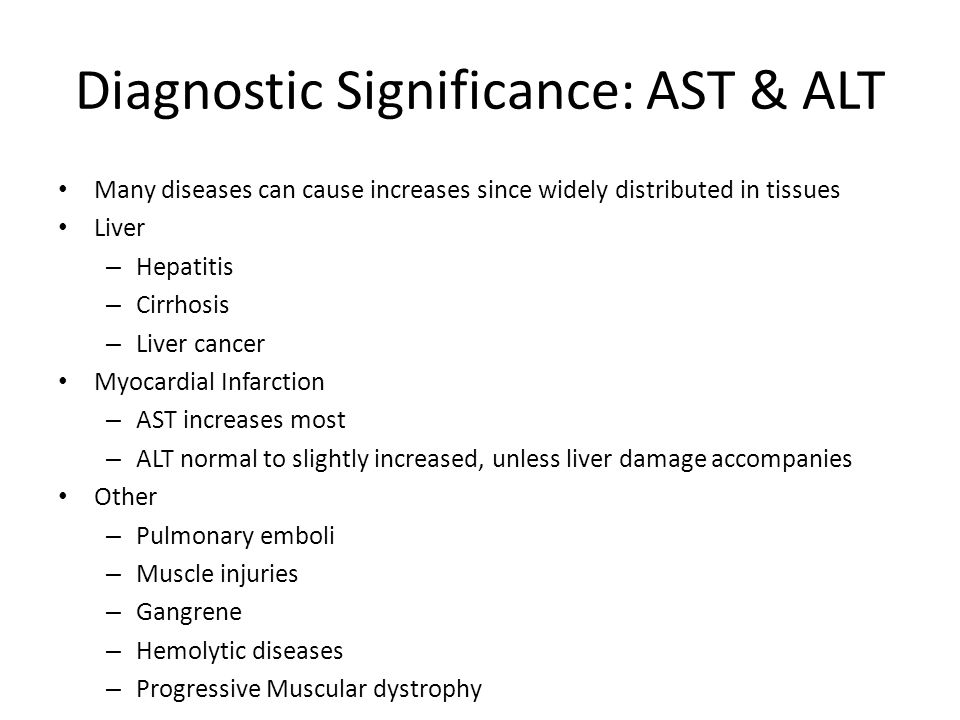

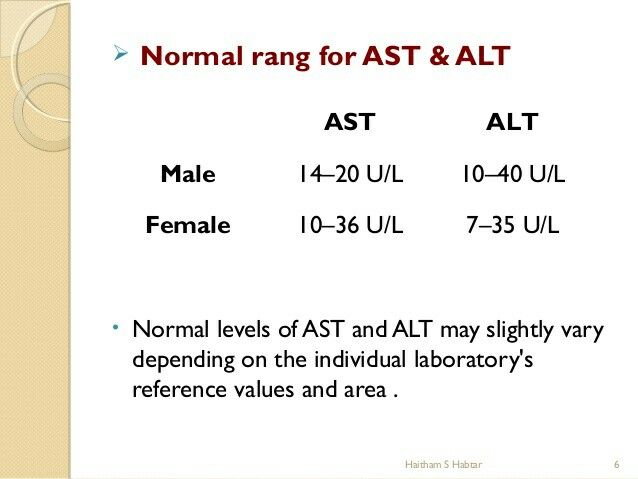 2 ALT and AST in a biochemical blood test: what are these indicators and how do they interact?
2 ALT and AST in a biochemical blood test: what are these indicators and how do they interact?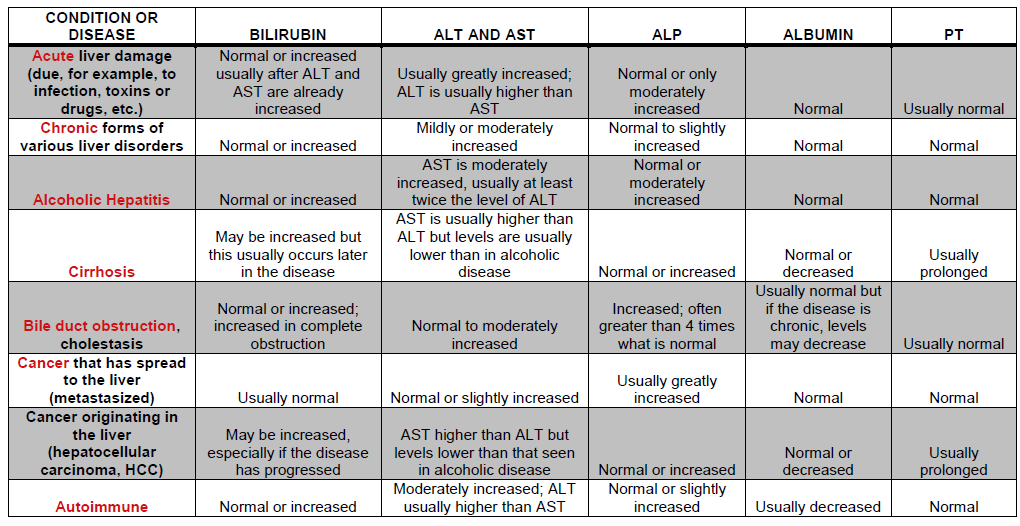 14.0.4 Can drugs affect blood levels of ALT and AST?
14.0.4 Can drugs affect blood levels of ALT and AST?
